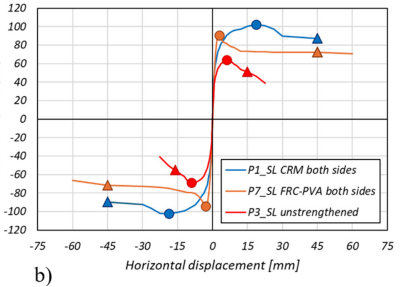Larisa Garcia-Ramonda, Madalena Ponte, Igor Lanese, Gerard J. O’Reilly, Elisa Rizzo Parisi, Francesco Graziotti, Luca Pelà, Andrea Penna, Guido Magenes, Rita Bento, and Gabriele Guerrini
i Researcher, Universitat Politècnica de Catalunya, Barcelona, Spain, larisa.garcia.ramonda@upc.edu
ii Postdoctoral Researcher, University of Pavia, Pavia, Italy, madalena.ponte@unipv.it
iii Scientific Responsible 6D Shaking Table and Damper Testing System, EUCENTRE, Pavia, Italy, igor.lanese@eucentre.it
iv Associate Professor, University School for Advanced Studies (IUSS), Pavia, Italy, gerard.oreilly@iusspavia.it
v Scientific Technical Operator 6D Shaking Table and Damper Testing System Researcher, EUCENTRE, Pavia, Italy, elisa.rizzoparisi@eucentre.it
vi Associate Professor, University of Pavia, Pavia, Italy, francesco.graziotti@unipv.it
vii Professor, Universitat Politècnica de Catalunya, Barcelona, Spain, luca.pela@upc.edu
viii Professor, University of Pavia, Pavia, Italy, andrea.penna@unipv.it
ix Professor, University of Pavia, Pavia, Italy, guido.magenes@unipv.it
x Professor, CERIS, Instituto Superior Técnico, Universidade de Lisboa, Lisboa, Portugal, rita.bento@tecnico.ulisboa.pt
xi Assistant Professor, University of Pavia, Pavia, Italy, gabriele.guerrini@unipv.it
ABSTRACT
This paper discusses the effectiveness of Composite Reinforced Mortars (CRM) and Fiber-Reinforced Mortars (FRM) as seismic retrofit of existing stone masonry buildings, through experimental research carried out within the ERIES-RESTORING project at the EUCENTRE facilities in Pavia, Italy. The in-plane cyclic behavior of these innovative strengthening materials, compatible with historical masonry, was assessed on full-size piers, subjected to constant axial load and double-fixed boundary conditions. Four specimens were strengthened with CRM, consisting of a glass-FRP mesh embedded in natural hydraulic-lime mortar: CRM was applied to one or both sides of the specimen, while two different pier aspect ratios were investigated to study the flexural and shear behavior of strengthened walls. The FRM retrofit, consisting of a mortar with polymeric fibers, was applied directly to both sides of a single pier, with an aspect ratio inducing flexural behavior. Two bare masonry piers were also tested with identical aspect ratios and axial loads. A complementary mechanical characterization campaign on mortars, retrofit components, and bare or strengthened stone masonry wallettes provided information about material properties. The experimental results in terms of damage mechanisms, lateral strength, and deformation capacity, are presented herein. Ultimately, the project outcomes will form the basis for the development of design guidelines and code requirements for the retrofit of existing masonry structures with CRM and FRM.
KEYWORDS: composite reinforced mortars, fiber-reinforced mortars, quasi-static cyclic shear-compression tests, seismic retrofit of existing buildings, stone masonry.
085-Garcia-Ramonda.pdf



